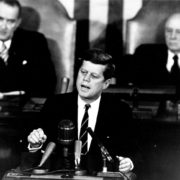Why was the ASEAN established?
Topic of Study [For H2 History Students]:
Paper 2: Regional Conflicts and Co-operation
Source Based Case Study
Theme III Chapter 2: ASEAN
What is ASEAN?
On 8 August 1967, the Association of Southeast Asian Nations (ASEAN) is a regional organization that was established. The foreign ministers of five Southeast Asian countries – Malaysia, Indonesia, Singapore, Philippines and Thailand – signed the historic document, known as the ‘ASEAN Declaration‘ in Bangkok, Thailand.
In the 1980s and 1990s, ASEAN expanded its membership by including other neighbouring countries, like Brunei (1984), Vietnam (1995), Laos and Myanmar (1997) and Cambodia (1999).
The aims and purposes of ASEAN
Within the ASEAN Declaration, it outlined what ASEAN was meant to achieve objectives such as:
1. To accelerate the economic growth, social progress and cultural development in the region through joint endeavours in the spirit of equality and partnership in order to strengthen the foundation for a prosperous and peaceful community of South-East Asian Nations;
2. To promote regional peace and stability through abiding respect for justice and the rule of law in the relationship among countries of the region and adherence to the principles of the United Nations Charter;
ASEAN Declaration (Bangkok Declaration), 8 August 1967.
In view of these efforts, it is important to consider the challenges that countries in the Southeast Asian region encountered in the 1950s and 1960s to understand the rationale behind its establishment.
Factor #1: Maintenance of regional security
Before ASEAN was formed, there were inter-state tensions that gave rise to conflicts. These conflicts threatened the security of affected countries, including those in the neighbouring zones. For instance, the Konfrontasi (Confrontation) was a controversial foreign policy that affected the political stability of nations, like Singapore and Malaysia. Following the de-escalation of the tumultuous phase, the formation of ASEAN would help to mend the diplomatic ties of the affected countries and encourage Indonesia to adopt a more collaborative position.
Furthermore, following the Suez Crisis, the British announced the withdrawal of its military from the region by 1971. This move raised security concerns for Singapore as its small and vulnerable state could expose the country from any potential external threat. Therefore, the formation of a regional organization (i.e. ASEAN) would arguably compensate for the departure of the external powers.
Factor #2: Assertion of an independent region free from external interference
In view of the Konfrontasi, Southeast Asian nations formed the regional organization to promote accommodation and collaboration between one another. Although some of these member nations held contrasting perspectives towards co-ooperation with external powers, there was a general consensus that ASEAN would become the central focus in promoting intra-ASEAN engagement.
For example, Singapore was supportive of the formation as it would lead to the increased accessibility of the region’s markets. Following the ‘Separation’, Singapore was in dire need of economic support from abroad to facilitate its economic nation-building efforts. In 1967, it was estimated that Southeast Asia had a combined market of more than US$280 million. Hence, intra-ASEAN trade would no doubt be beneficial for member nations.
What can we learn from this article?
Consider the following question:
– Assess the view that security reasons were the most important in explaining the formation of ASEAN in 1967 [to be discussed in class].
Now that you have learnt the reasons that explain the formation of ASEAN, we strongly encourage you to attempt related source-based case study questions to review your knowledge application skills. Alternatively, you can join our JC History Tuition as we provide numerous practice questions and review your answers to ensure that there is progressive learning.
The H2 and H1 History Tuition feature online discussion and writing practices to enhance your knowledge application skills. Get useful study notes and clarify your doubts on the subject with the tutor. You can also follow our Telegram Channel to get useful updates.
We have other JC tuition classes, such as JC Math Tuition and JC Chemistry Tuition. For Secondary Tuition, we provide Secondary English Tuition, Secondary Math tuition, Secondary Chemistry Tuition, Social Studies Tuition, Geography, History Tuition and Secondary Economics Tuition. For Primary Tuition, we have Primary English, Math and Science Tuition. Call 9658 5789 to find out more.











